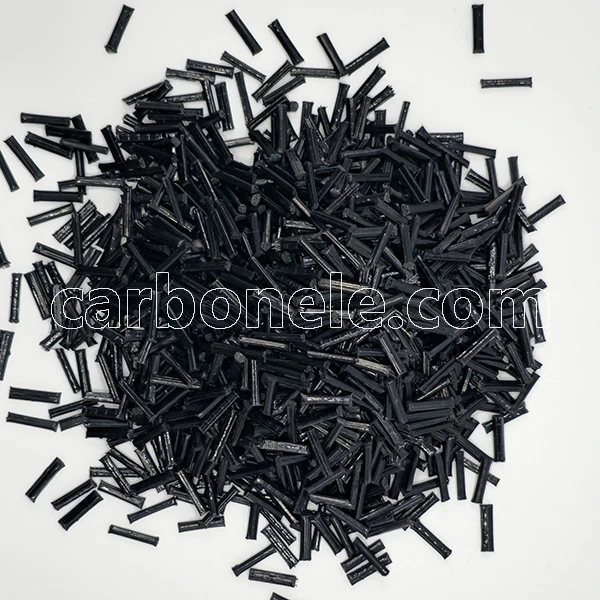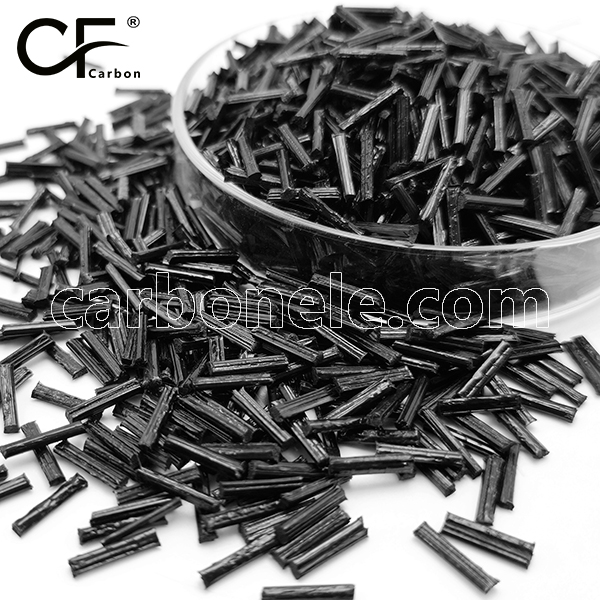
Anti Static PP LCF 20 Pellet
PP LCF 20, a 20% long glass fiber reinforced polypropylene, offers excellent mechanical properties like high strength and impact resistance. It also has improved thermal and dimensional stability, good wear and corrosion resistance, low specific gravity, and good processability.
- Manufacturer: Carbon New Material
- OEM/ODM: Acceptable
- Color: Black
- Free Samples: ≤25kgs
- MOQ: 100kgs
- Port: Xiamen
- Model: PP-LCF-BCA2
- Fillers: Long carbon fiber
Performance advantages of PP LCF 20 (20% long glass fiber reinforced polypropylene)
1. Excellent mechanical properties:
– High strength: Long glass fiber addition significantly improves tensile, bending strength. PP LCF 20 can withstand greater forces without deformation or damage, suitable for high-strength structural parts.
– High rigidity: Enhanced rigidity for better dimensional stability and shape accuracy. Suited for parts with high dimensional precision requirements.
– Good creep resistance: Small deformation under long-term stress for reliable long-term use.
– Good impact resistance: Absorbs and disperses impact energy, useful in impact-prone applications like auto parts and sports equipment.
2. Improved thermal performance:
– Good heat resistance: Compared to ordinary polypropylene, heat resistance and heat distortion temperature of PP LCF 20 are higher. Applicable to parts in high-temperature environments like engine peripherals and electrical enclosures.
– High thermal oxidative aging stability: Resistant to heat and oxygen for long service life.
3. Excellent dimensional stability:
– Low shrinkage rate: Limits polypropylene molecule movement, reducing shrinkage for higher dimensional accuracy.
– Low warpage: More uniform internal stress distribution for better product quality and production efficiency.
4. Other performance advantages:
– Good wear resistance: Increases surface hardness and wear resistance for longer product life.
– Good corrosion resistance: Retains polypropylene’s corrosion resistance for use in corrosive environments.
– Low specific gravity: Helps reduce product weight and costs, in line with lightweight trend.
– Good processability: Can be molded by common methods with high efficiency despite glass fiber addition.
Contact Us
If you want to obtain information such as product specifications, performance, and price, choose a suitable product according to your own needs. Meanwhile, you can ask the manufacturer to provide samples for testing to ensure that the material meets your usage requirements. If you are interested in purchasing this composite material, please contact the manufacturer Carbon (Xiamen) New Material directly.

Frequently Asked Questions
Carbon (Xiamen) New Material Co., Ltd. aims to provide buyers with "one-stop" worry-free high-quality services. Here you can find all information about carbon fiber engineering plastics. If you still have questions, please send us an email for consultation!
-
How can I contact the manufacturer of a product that interests me?
When you find a product you are interested in, you can contact the manufacturer directly by sending an email and we will get back to you as soon as possible.
-
How do I find the products that interest me?
All you need to do is enter the keyword, product name in the search window and press the Enter key on your keyboard. Your search results page will then be displayed. You can also search within the product category pages on the home page. Each category is divided into subcategories, allowing you to refine your search and find products that interest you.
-
Where will I find a buying guide?
Please contact our after-sales service directly and we will provide you with a comprehensive operating guide.
-
What are CF Reinforced Thermoplastic Composites?
CF Reinforced Thermoplastic Composites are materials where carbon fibers are incorporated into a thermoplastic matrix. They combine the strength and stiffness of carbon fibers with the processability and recyclability of thermoplastics. For instance, they are used in automotive parts like bumper beams.
-
What are the benefits of CF Reinforced Thermoplastic Composites over traditional composites?
The key benefits include faster production cycles, easier recyclability, and better impact resistance. They also offer design flexibility. An example is in the manufacturing of consumer electronics casings where complex shapes can be achieved more easily.
-
How are CF Reinforced Thermoplastic Composites processed?
Common processing methods include injection molding, extrusion, and compression molding. Injection molding is widely used for mass production. For example, in the production of small components for the medical industry.
-
What industries use CF Reinforced Thermoplastic Composites?
They are utilized in aerospace, automotive, medical, and sports equipment industries. In aerospace, they can be found in interior components. In the medical field, they might be used in prosthetics.
-
How does the carbon fiber content affect the properties of the composites?
Higher carbon fiber content generally leads to increased strength and stiffness but may reduce ductility. A moderate content is often balanced for specific applications. For example, a higher content might be preferred in structural parts of a race car.
-
What are the challenges in using CF Reinforced Thermoplastic Composites?
Challenges include higher material costs, complex processing equipment requirements, and ensuring uniform fiber dispersion. Issues with adhesion between the fibers and the matrix can also arise. An example is in achieving consistent quality in large-scale production.
























